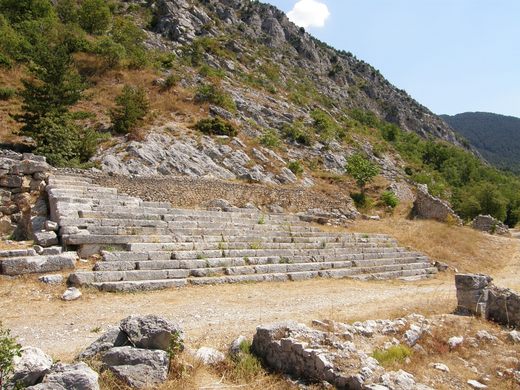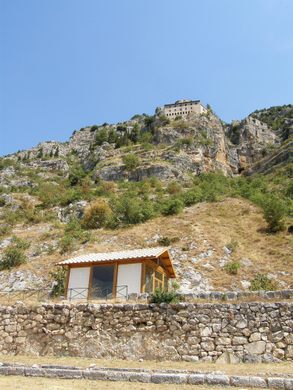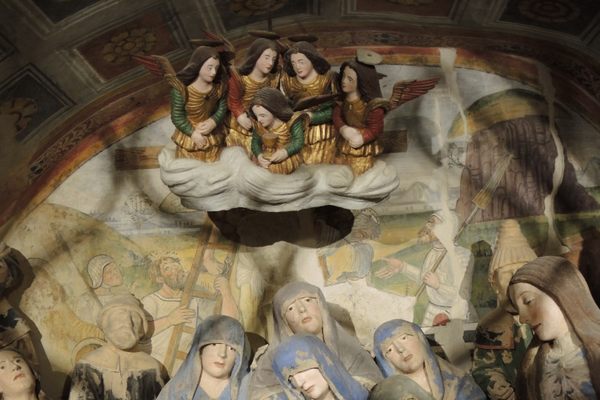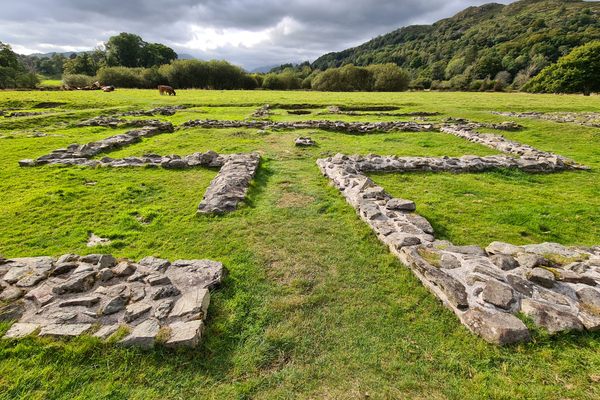Shrine of Hercules Curinus
The ruins of this temple were later chosen by Pope Celestine V to found an abbey and a hermitage.
Upon its discovery in the 1950s, this site was initially believed to be the villa of the Roman poet Ovid, Sulmo’s most famous native.
However, dedicatory inscriptions and votive material revealed a vast religious complex. Initially constructed by the local Peligni people, the site was built on a complex multi-leveled terracing system, like the more famous temples of Fortuna in Palestrina and Hercules in Tivoli.
These radical architectural changes occurred after the Social War in 89 BC. The temple survived until the early Christian age despite a destructive landslide during the 2nd century AD. Recognizing the ancient sacredness of the site, the hermit Peter of Morrone (later known as Pope Celestine V), built the large Abbadia Morronese below the temple. He also constructed the hermitage of Saint Onuphrius in a more remote location on the cliff above the temple ruins.
The terraces date from different periods, with the lower majestic terrace crafted in the opus caementicium technique. It also supports a podium and 14 vaulted rooms. The upper terrace housed the altar which was covered in bronze plates and was home to some of the shrine’s most cherished artifacts. This included a stunning bronze statue of Hercules now at the archaeological museum in Chieti. Wall decorations and mosaics are still preserved on site. Water was channeled from the springs nearby and played a significant role in various rituals and the architectural characteristics of the temple.
In the ancient pre-Roman Italic world, Hercules was a popular god associated with pastoralism and traveling, especially along the old transhumance routes of Abruzzo and Central Italy. So, it’s no surprise that the bronze statue was gifted to the temple by a rich local merchant, Marcus Attius Peticius Marsus. The Curinus attribution, associated elsewhere in the Roman world with Jupiter and Romulus, suggests a significant role within the new organization of Roman society. This involved the curiae (co-virinus) grouping of citizens.
Know Before You Go
Access is free, although opening hours might be limited during the low season.
















Follow us on Twitter to get the latest on the world's hidden wonders.
Like us on Facebook to get the latest on the world's hidden wonders.
Follow us on Twitter Like us on Facebook